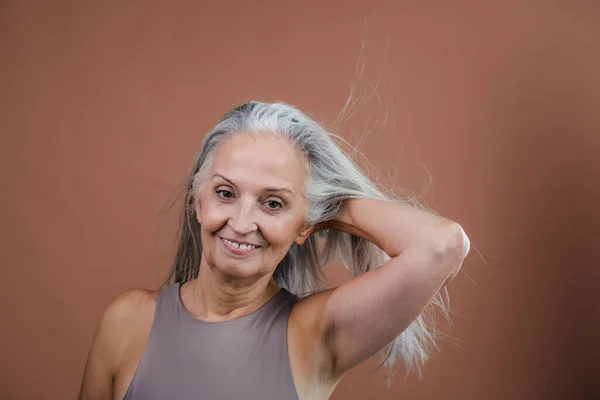Share this @internewscast.com
Fine Hair vs. Thin Hair: Understanding the intricacies of different hair types is essential for proper maintenance and styling. The terms ‘fine’ and ‘thin’ are often confused, yet they describe separate attributes. Let’s clarify these concepts together. I’m here to guide you in distinguishing between fine and thinning hair, with expert advice and relatable insights to make things clear. By the end, you’ll be equipped with knowledge to care for your hair properly—and perhaps even leave the house with increased confidence. Ready to dive in? Let’s get started.

What Is Fine Hair?
Fine hair refers to the texture of each individual strand. Ross Kopelman, DO, esteemed hair transplant surgeon at Kopelman Hair Restoration in Palm Beach, Florida, notes that fine hair strands have a smaller diameter, lack the medulla—a core part that lends thickness—and contain less protein, rendering them more fragile and susceptible to breakage. Fine hair can feel smooth and silky but typically lacks volume and elasticity. Interestingly, this hair type is common among lighter shades such as blonde. It’s important to note that having fine hair doesn’t imply a lack of hair density; you can possess a full head of fine strands.
What Is Thinning Hair?
In contrast, thinning hair pertains to density, or the quantity of hairs on the scalp. This condition occurs when hair follicles yield fewer strands, or when existing strands shed due to factors like stress, hormonal shifts, aging, or health conditions. Unlike fine hair, thinning affects people of all strand textures—whether fine, medium, or coarse. Thinning hair often reveals visible patches on the scalp and diminished overall volume. While it might be a fleeting issue—as with stress-related thinning—it could also indicate more serious health problems requiring medical evaluation.
How to Know If You Have Fine Hair vs. Thin Hair
Figuring out whether you have fine or thin hair involves checking both strand texture and density. Here’s a simple way to do it:
- Fine Hair Test: Hold a single strand between your fingers. If it feels almost invisible or slips easily through your fingers, you likely have fine hair.
- Thin Hair Test: Take a closer look at your scalp. If you notice gaps or sparse areas when styling or parting your hair, you might have thin hair. It’s possible to have fine strands with high density (a full head of fine hair) or coarse strands with low density (thinning coarse hair).
Can Hair Become Finer With Age?
Yes, aging can change both the texture and density of your hair. As we age, the diameter of individual strands may shrink due to reduced protein production in the follicles. Hormonal shifts can also lead to thinning by decreasing follicle activity. Additionally, nutritional deficiencies and environmental factors contribute to finer and thinner hair over time.
How to Thicken Fine Hair
While genetics play a big role in determining your hair type, there are ways to improve the appearance of fine hair:
Lifestyle Adjustments
- Eat for Your Hair: Maintain a balanced diet rich in proteins, vitamins (especially biotin), and omega-3 fatty acids.
- Manage Stress: Reduce stress through mindfulness practices and get enough sleep.
- Stay Hydrated: Drink plenty of water to support scalp health.
Hair Care Tips
- Lightweight Products: Use shampoos and conditioners specifically formulated for fine hair.
- Avoid Heavy Products: Steer clear of heavy products that weigh down strands; instead, opt for volumizing mousses or root sprays.
- Scalp Treatments: Incorporate gentle scrubs or serums to promote follicle health.
Styling Techniques
- Cool Blow-Dry: Blow-dry with cool air while lifting roots for added volume.
- Styling for Fullness: Choose hairstyles that create an illusion of fullness—layers or short cuts work well for fine textures.
Professional Treatments
Consider consulting a trichologist or dermatologist for advanced solutions like platelet-rich plasma (PRP) therapy or specialized supplements designed for thicker-looking locks.
Quick Hacks for Thicker-Looking Fine Hair
- Pick a Smart Shampoo: Go sulfate-free and volumizing to keep your natural oils in check.
- Don’t Overdo Washing: Twice a week keeps your scalp from throwing in the towel.
- Heat with Care: Low settings on tools save those fragile strands from frying.
- Play with Color: Highlights or lowlights trick the eye into seeing more depth.
- Ask an Expert: A trichologist’s got your back if volume’s still playing hard to get.
Final Thoughts
Understanding whether your hair is fine or thin is key to addressing its unique needs. While genetics are a significant factor in determining texture and density, lifestyle changes and proper care can enhance your hair’s appearance. Whether you’re managing delicate fine strands or combating thinning patches, embracing tailored solutions will help you achieve healthier, fuller-looking hair.
Don’t Miss | Why You Wake Up With Headaches: Causes & Prevention Tips
















